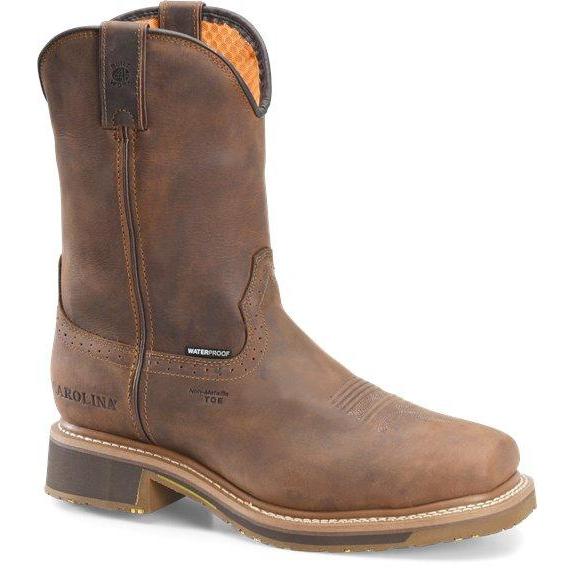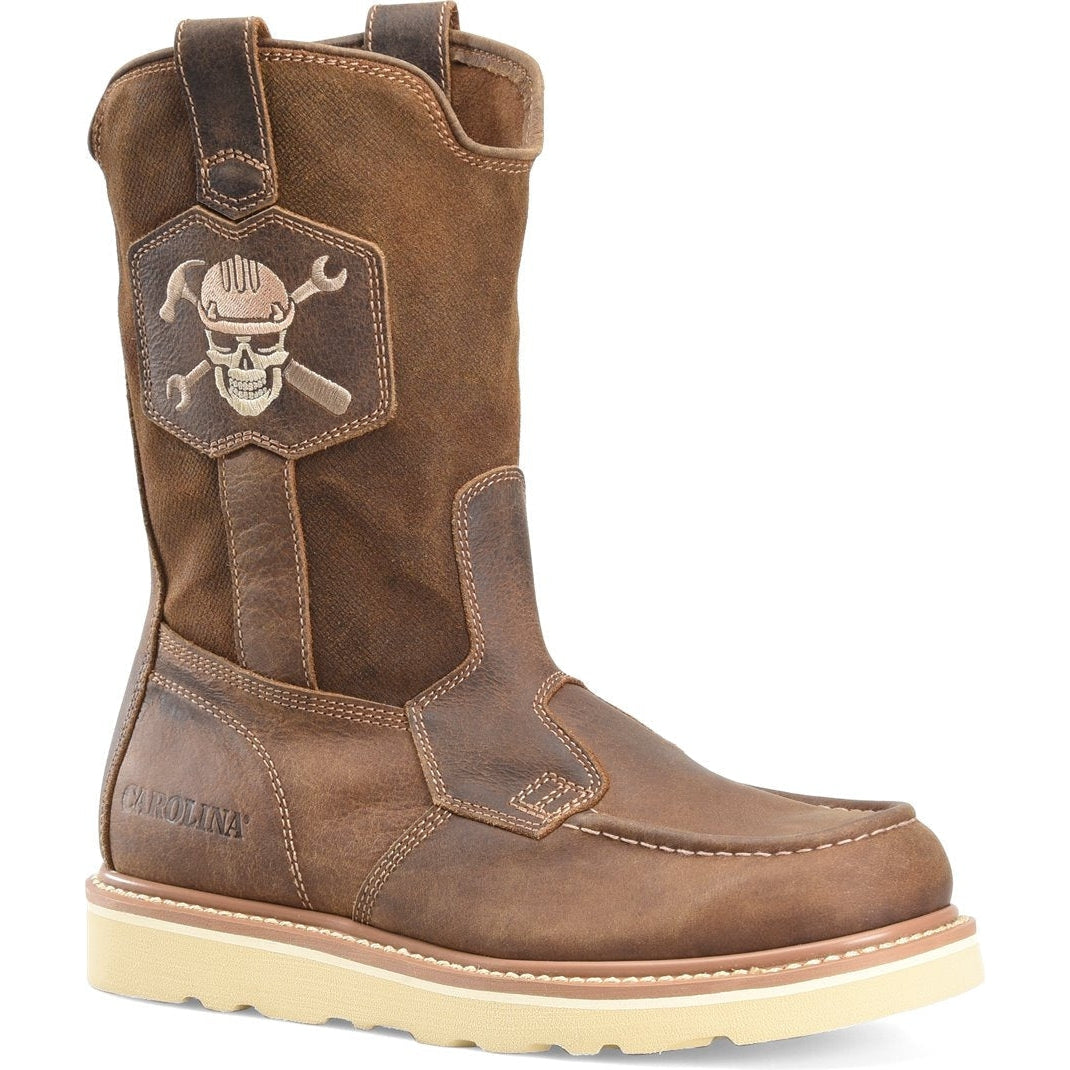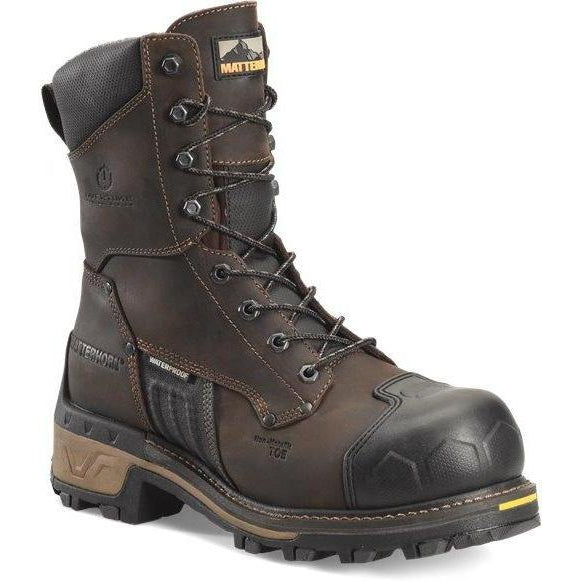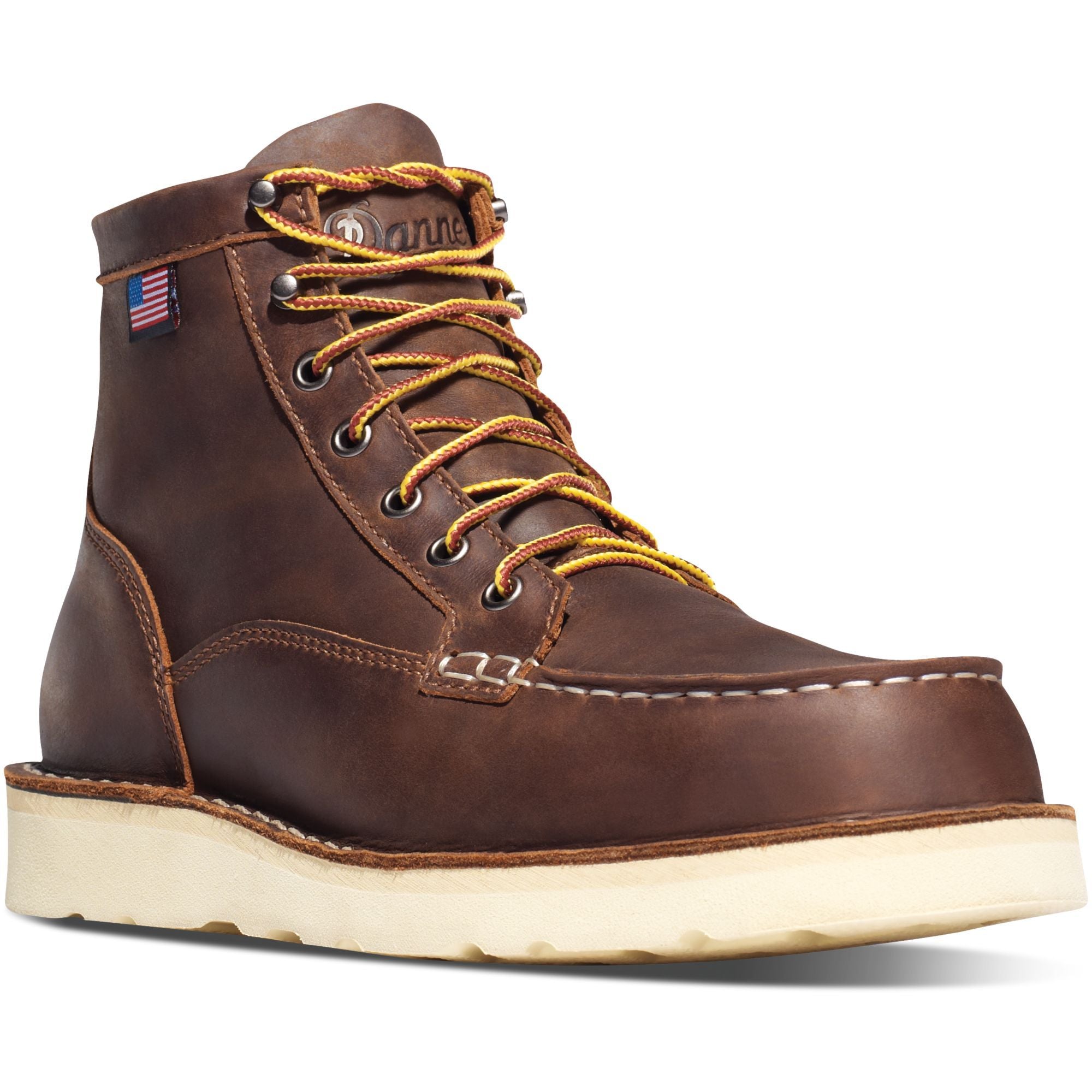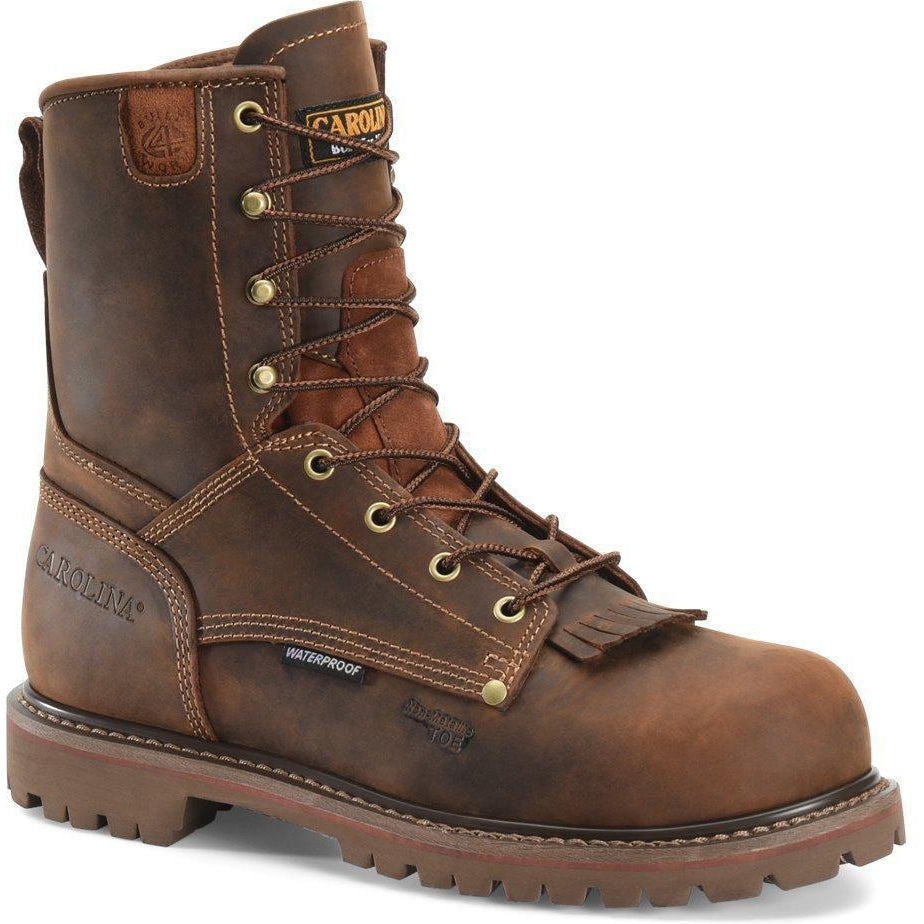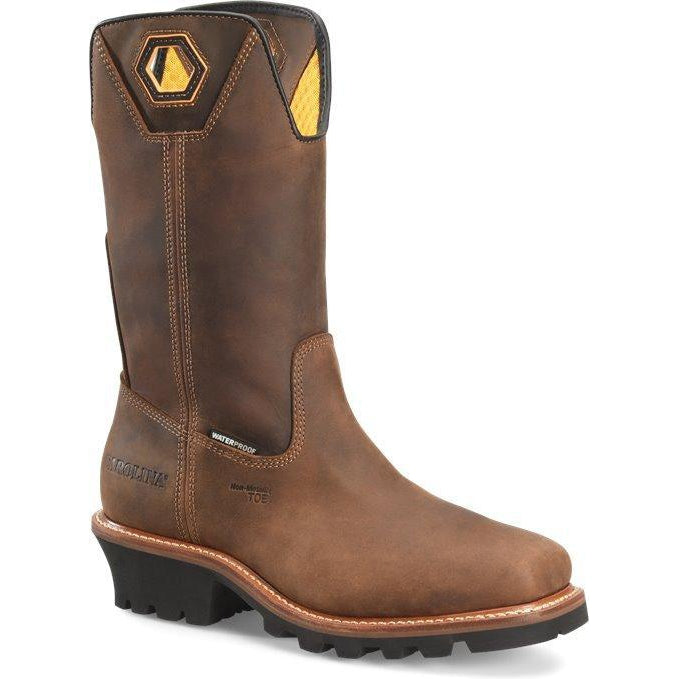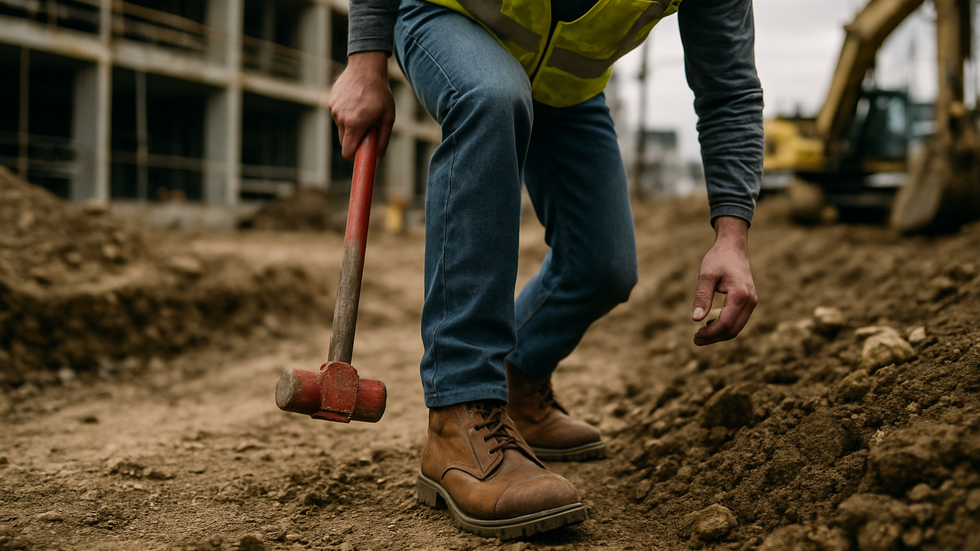Sometimes, it's not the job that's wearing you down, but rather your boots. A bad fit can mean sore arches, painful pressure points, or blisters developing by lunchtime. If your shoes consistently feel uncomfortable, it might be more than just typical break-in pain. The real culprit could be that you're wearing the wrong boot width. It’s essential to consider width and determine if you need a wide work boot or a narrow boot.
Your work boots should support you, not hinder you. If your shoes pinch your toes or allow your feet to slide around excessively, you'll suffer reduced productivity and increased fatigue. Recognizing the difference between normal break-in discomfort and a true sizing issue is crucial. Issues such as constant toe rubbing, numbness, or persistent pain in your arches may indicate that your boots are either too narrow or too wide for your feet.
Wide-Fit or Narrow-Fit? Here's How to Tell What You Need
Everyone's feet are unique. Whether you have high arches, wide toes, flat soles, or a combination of these, your foot shape plays a significant role in determining how your work boots fit. Choosing between wide-fit and narrow-fit boots isn't simply about comfort; it directly impacts your performance, safety, and overall job satisfaction.
Foot Shape Matters: Understanding Your Needs
The way your feet naturally spread or compress when standing, walking, or working can indicate if a wider or narrower boot is best. If your toes frequently feel pinched, cramped, or compressed, you likely need wide-fit boots. Conversely, if your foot feels like it's sliding around or lacks proper support, a narrower fit might provide the stability you're missing.
Key Signs You Need Wide-Fit Boots:
- Frequent blisters or calluses on the sides of your feet.
- Persistent foot pain after prolonged standing or walking.
- Toes that feel cramped or compressed.
- Visible shoe deformation along the sides after wearing.
Key Signs You Need Narrow-Fit Boots:
- Feet sliding forward or sideways inside the boot.
- Difficulty maintaining a secure foothold when climbing or walking on uneven surfaces.
- Excessive movement causes heel rub or friction blisters.
Understanding your foot shape is the first step toward finding boots that work with you, not against you. By choosing the correct width, you'll enhance both comfort and safety during your shift.
A Simple Way To Measure Foot Width at Home
[prc-collections-carousel]
Determining whether you need wide-fit or narrow-fit boots doesn't require specialized equipment or a visit to a store. With just a piece of paper, a pencil, and a measuring tape, you can accurately find your foot width at home.
Step-by-Step Method to Measure Foot Width:
- Set Up Your Measuring Area
- Place a piece of paper flat on a hard, even surface, such as tile or hardwood floors.
- Wear socks similar to those you'd wear with your boots.
- Outline Your Foot
- Stand on the paper, distributing your weight evenly across it.
- Use a pencil or pen held vertically to trace an accurate outline around your foot. Keep the pen perpendicular to avoid skewed results.
- Measure the Width
- Locate the widest points of your foot outline (usually near the ball of your foot).
- Use a measuring tape or ruler to measure straight across between these two points.
- Determine Your Width
- Compare this measurement to a boot width sizing chart.
- A standard width for men's boots typically ranges around 4 inches, with widths above that often requiring wide sizes.
Example:
- If your measured width is approximately 4¼ inches or more, wide-fit boots may be the best option for you.
- If the measurement is below 4 inches, standard or narrow-fit boots are likely the right choice.
Perform this measurement for both feet, as differences between the left and right feet are common. Always base your sizing on the larger foot for maximum comfort. For more information on boot width classifications and sizing charts for men and women, refer to our boot size guide.

Why Sizing Up Isn't the Same as Sizing Wide
A common misconception among workers is that going up half a size or even a full size will solve a tight-fitting boot issue. However, sizing up isn't the same as choosing a wider boot. This misunderstanding can lead to discomfort and even safety risks on the job site.
Sizing Up vs. Width Adjustment:
- Sizing Up (Length): Increasing boot size adds length, not width. This can cause your foot to slide inside the boot, creating friction at your heel and instability during movement. While your toes might feel less cramped, your feet will still lack the side-to-side room they genuinely need.
- Choosing Wide Width: Opting for a boot specifically designed for wider feet provides additional room across the entire footbed, ensuring a comfortable fit. This extra space alleviates pressure points without sacrificing proper fit lengthwise.
Common Issues When Incorrectly Sizing Up:
- Heel slippage resulting in blisters or sores.
- Reduced foot stability, causing a higher risk of sprains or slips.
- Lack of proper arch support due to an oversized boot.
- Excessive wear of boot lining and materials from foot movement.
Properly Selecting Width for Optimal Comfort:
Selecting wide-fit boots from the start ensures your foot receives necessary lateral support, eliminates painful pressure points, and helps maintain better balance, especially critical for physically demanding jobs like mining or construction. By choosing width over length, you ensure comfort, safety, and durability, maximizing your boot's lifespan and enhancing performance on the job.
What Boot Width Works Best for Tough Mining Conditions?
In demanding fields like mining, choosing the right boot width is critical for both comfort and safety. Whether you're working deep underground in coal mines or maneuvering through narrow tunnels, your boots must provide optimal support without constricting your feet.
Importance of Proper Boot Width in Mining:
- Comfort in Tight Spaces: Narrow boots can cause foot cramps, blisters, and discomfort in confined spaces, which are typical of underground mining. Wide-fit boots provide extra room to accommodate natural foot expansion over long shifts.
- Improved Stability: Wider boots enhance your footing on uneven, rocky terrain, reducing the risk of slips or twisted ankles.
- Better Circulation: Tight boots restrict blood flow, which can lead to increased fatigue and discomfort. Properly fitted wide boots promote better circulation, keeping feet energized during extended shifts.
Ideal Features of Wide-Fit Mining Boots:
- Rugged Materials: Boots crafted from durable, abrasion-resistant leather or robust rubber provide flexibility without compromising protection.
- Enhanced Grip: Rubber mining boots provide superior traction on slippery, muddy surfaces commonly found in coal mines and underground environments.
- Adequate Toe Space: Steel-toed wide boots ensure safety from falling debris while still allowing sufficient room for your toes.
By carefully selecting the right width, miners can maintain safety, productivity, and comfort even under the harshest conditions.
How Fit Changes After a Few Shifts (And What to Expect)
Boot fit doesn't stay the same from the day you first lace them up. After a few days on the job, especially with demanding work boots, materials naturally stretch or adapt slightly to your feet. Understanding this break-in process helps ensure you've selected the right size, whether narrow or wide, from the start.
How Boot Materials Impact Fit Over Time:
Full-Grain Leather:
- Initial Fit: Firm, tight around the sides and instep.
- After Break-In: Molds comfortably to your foot's shape, typically expanding slightly in width without losing structure.
Synthetic or Rubber Boots:
- Initial Fit: Usually more rigid, less forgiving at first.
- After Break-In: Minimal width expansion. Expect boots to retain their initial shape, highlighting the importance of getting the correct width upfront.
What to Expect During Boot Break-In:
- Minor Discomfort:
Slight tightness, especially in leather boots, is normal at first. Persistent pain or severe pressure points indicate a width problem.
- Monitor Comfort During Early Shifts:
Discomfort should decrease steadily after the first week. If it worsens or remains the same, consider reassessing your width
Tips for Choosing the Correct Width Initially:
- Slightly Snug, Not Tight:
Boots should be comfortably snug initially, allowing for some minor stretching.
- Material Adaptation:
Leather boots gradually soften, typically expanding by a few millimeters after several shifts. Synthetic materials generally maintain their original size.
Understanding how boots change during break-in ensures long-term comfort, reducing unnecessary discomfort or replacements down the line.
Frequently Asked Questions
How Do I Know If I Need Wide Work Boots?
Signs include constant toe compression, outer foot pain, and excessive wear along the sides of your boots. A quick home foot width measurement can help confirm whether a wide-fit shoe is needed.
Should I Size Up in Boots If I Have Wide Feet?
Sizing up adds length, not width. This can cause instability, heel slippage, and discomfort. Opt for wide-width boots instead of longer ones for a better fit.
How to Choose Boots for Wide Feet?
Look for boots labeled as wide (often marked "W" or "EE"). Ensure the toe box has room, and the midfoot fits comfortably without pinching. Try rubber mining boots or other styles designed for broader feet.
How Do I Know If My Foot Is Narrow or Wide?
Measure across the widest part of your foot and compare it with standard sizing charts. The regular width is approximately 4 inches for men's size 9. Wider than that? You likely need wide-fit boots.
How to Tell If a Boot Is Too Narrow?
If your toes feel crushed, your feet go numb, or the boot leaves deep marks on the sides of your foot, it's too narrow.
